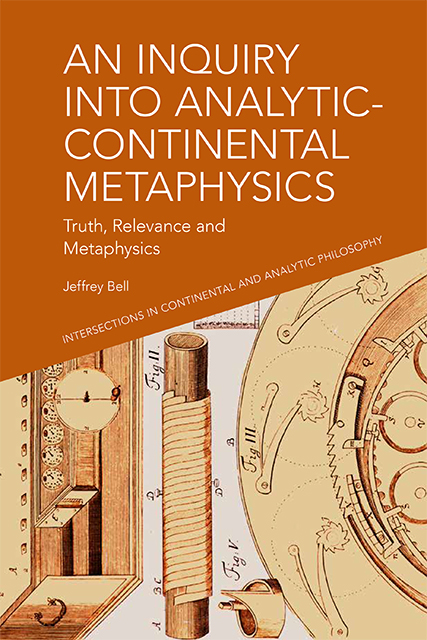Book contents
- Frontmatter
- List of Contents
- Acknowledgements
- Introduction
- §1 Problem of the New
- §2 Problem of Relations
- §3 Problem of Emergence
- §4 Problem of One and Many
- §5 Plato and the Third Man Argument
- §6 Bradley and the Problem of Relations
- §7 Moore, Russell and the Birth of Analytic Philosophy
- §8 Russell and Deleuze on Leibniz
- §9 On Problematic Fields
- §10 Kant and Problematic Ideas
- §11 Armstrong and Lewis on the Problem of One and Many
- 12 Determinables and Determinates
- 13 The Limits of Representational Thought
- 14 Learning from a Cup of Coffee
- 15 Carnap and the Fate of Metaphysics
- 16 Truth and Relevance
- Conclusion
- Bibliography
- Index
§2 - Problem of Relations
Published online by Cambridge University Press: 25 October 2023
- Frontmatter
- List of Contents
- Acknowledgements
- Introduction
- §1 Problem of the New
- §2 Problem of Relations
- §3 Problem of Emergence
- §4 Problem of One and Many
- §5 Plato and the Third Man Argument
- §6 Bradley and the Problem of Relations
- §7 Moore, Russell and the Birth of Analytic Philosophy
- §8 Russell and Deleuze on Leibniz
- §9 On Problematic Fields
- §10 Kant and Problematic Ideas
- §11 Armstrong and Lewis on the Problem of One and Many
- 12 Determinables and Determinates
- 13 The Limits of Representational Thought
- 14 Learning from a Cup of Coffee
- 15 Carnap and the Fate of Metaphysics
- 16 Truth and Relevance
- Conclusion
- Bibliography
- Index
Summary
If the new is new by virtue of its relation to that which precedes it, that which is not new, then we have a relationship that needs to be explained if we are to understand what it is that makes something new. We need to explain, for instance, the relationship between the phenomenon that is new, A, and the phenomenon or set of phenomena, let us call it B, that explains why A is new since A is unlike B but nonetheless related to B in some way. For instance, when Haydn first performed some of the pieces he composed while living in London, many considered them to be astonishingly new. In fact, a new category emerged in the wake of Haydn's compositions, the category now known as the Classical tradition in music, a tradition that is different from the Baroque tradition. At the time of his London performances, however, there was not yet the Classical label with which to identify Haydn's music, and yet this music was sufficiently unlike the music of his time (i.e., the Baroque music of his period) that it was considered new. What the new is new relative to, therefore, is important. Haydn's music was considered new not because of how it differed from the cuisine of his time, though that could play a role in creating the culture or world in which Haydn's music became possible, but primarily in how it related to other music. Even if we do not contest these points, however, we still have the problem of accounting for the relationship between A, Haydn's music in this case, and B, the Baroque music of his time. We cannot account for the novelty of A by simply focusing on A, for then we would neglect B, and it is the relationship between A and B that explains why A is new. We similarly cannot explain the relationship between A and B by just focusing on B, for then we ignore A, and it is the novelty of A we want to explain.
- Type
- Chapter
- Information
- An Inquiry into Analytic-Continental MetaphysicsTruth, Relevance and Metaphysics, pp. 16Publisher: Edinburgh University PressPrint publication year: 2022



